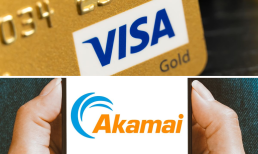The Treasury Department is pushing for frameworks and international standards for cross-border transactions — because if those foundations are not in place, risks abound.
And, with those frameworks in place, it is the private sector that will accelerate the transformation of the ways and means through which trillions of dollars move across the globe, for commercial and consumer-focused use cases alike.
As PYMNTS reported last week, Department of the Treasury Assistant Secretary for International Finance Brent Neiman said in a speech that “the United States is working to advance payment rails innovation, implement sound regulatory frameworks internationally and at home, and promote international standards that improve safety and address illicit finance risks.”
Pain Points Abound
The pain points are significant. PYMNTS Intelligence has noted in past reports that, in a survey of U.S. and U.K. smaller firms, a quarter of those companies’ sales were generated beyond the home shores. More than half of U.S. firms stated that they wanted to see innovations that improved risk and security of international payments, cutting down on fraud. A full 75% of firms we surveyed said that they were unhappy with the cross-border solutions they had in place. Separate research shows that U.S. merchants lost $3.8 billion last year alone due to failed cross-border payments. As for the cost of the transactions themselves, as reported here, consumer cross-border payments of as little as $200 are subject to bank processing fees averaging more than 11%. The eventual movement toward ISO 20022 as a common messaging standard will do much to modernize cross-border transactions, but the migration will take time.
In recent months, several announcements and partnerships from a broad range of players across the payments landscape have been forging a path that bridges the gap between how cross-border payments are done and how they ought to be done.
PayPal said last week that disbursement partners will be able to use PayPal USD (the company’s recently unveiled stablecoin offering) to settle cross-border money transfers. The new service will be offered through PayPal’s Xoom cross-border payments business.
Advertisement: Scroll to Continue
Mastercard, in another example, announced last month that Mastercard Move Commercial Payments addresses transparency concerns within the cross-border commercial transactions markets. For banks, the solution provides near real-time payments, settlement options, compatibility with existing correspondent banking arrangements between respondents and correspondents and value-added services like risk control.
JPMorgan and Mastercard said this month that they were partnering to link Mastercard’s Multi-Token Network to JPMorgan’s Kinexys Digital Payments to streamline cross-border B2B transactions, underpinned by blockchain technology.
The partnership allows for the real-time transfer of value, reducing time zone friction and settlement delays — a critical development for industries operating 24/7 supply chains.
Visa, partnering earlier this year with Standard Chartered, announced that the bank has joined the Visa B2B Connect multilateral payment network (for account-to-account payments) and has become Visa’s new settlement partner for a set of currencies.
Also in October, Thunes introduced a solution designed to help customers offer faster cross-border payments.
The payment infrastructure company’s Pay-to-Card offering, the company said late last month, is designed to connect members of the Thunes network to 15 billion cards worldwide, including those offered by Mastercard, Visa and China’s UnionPay.




